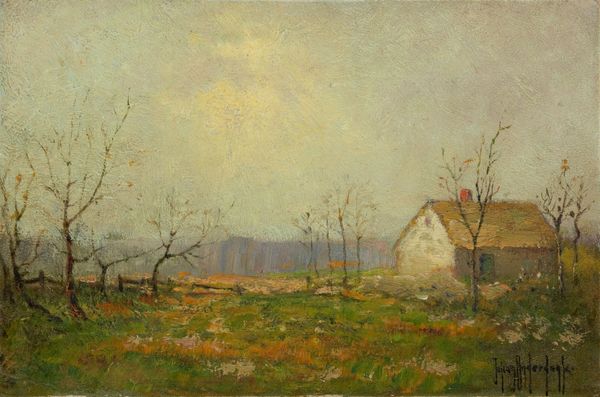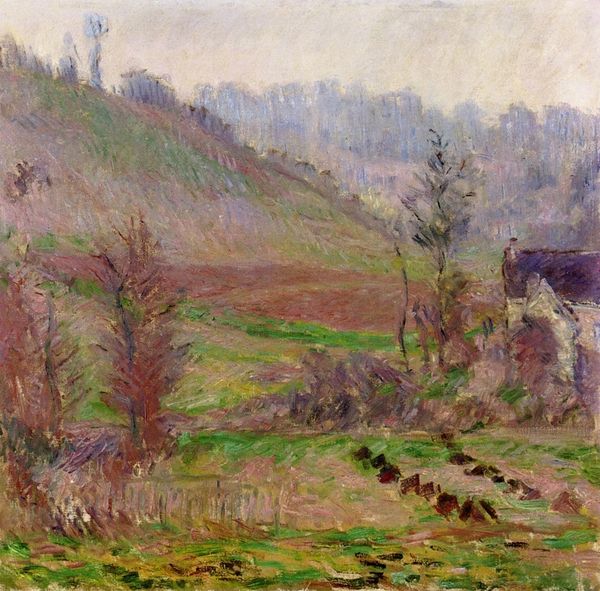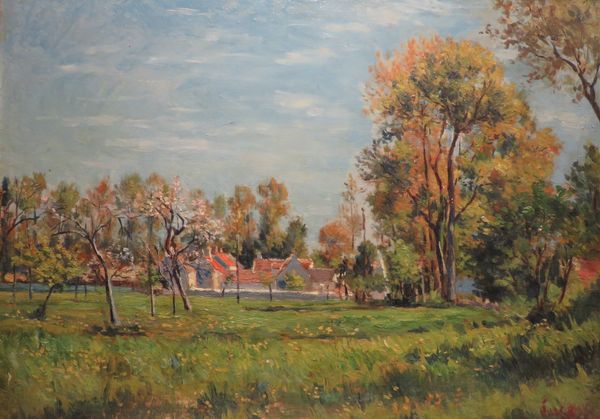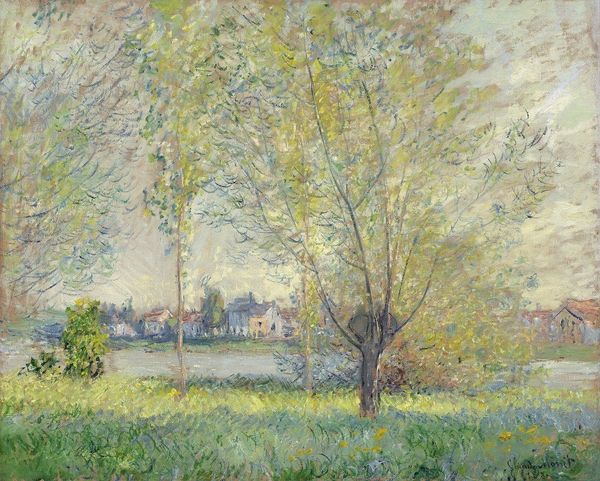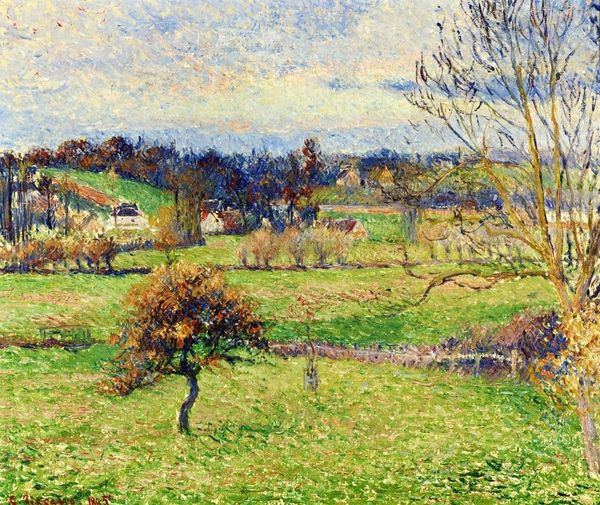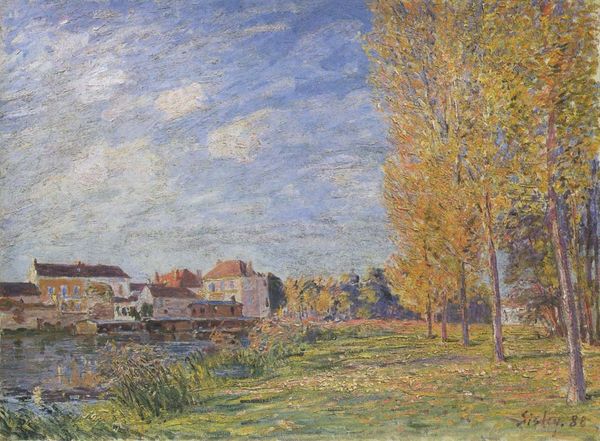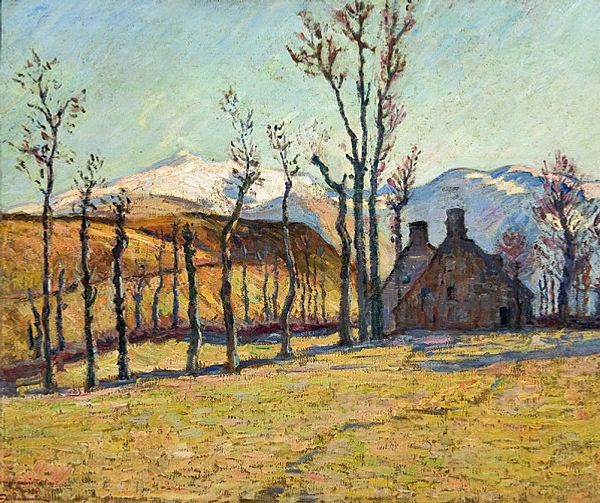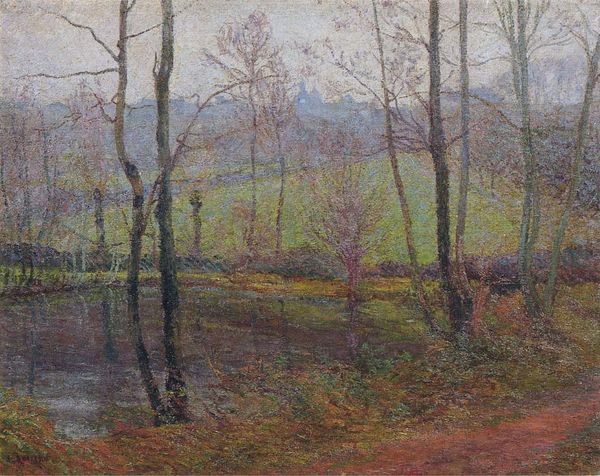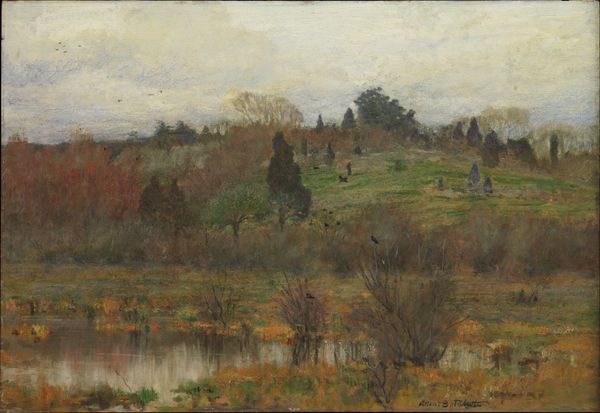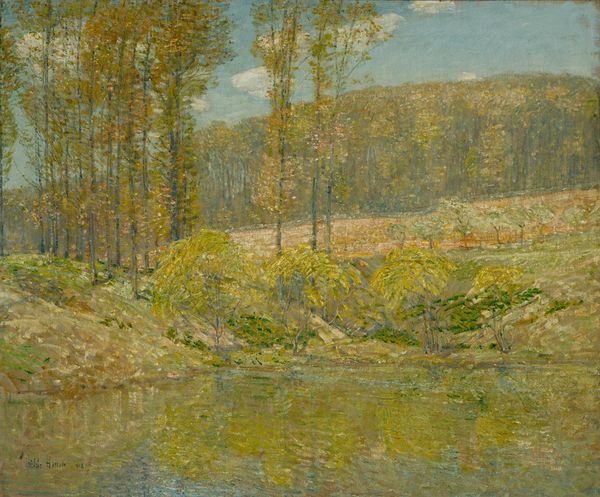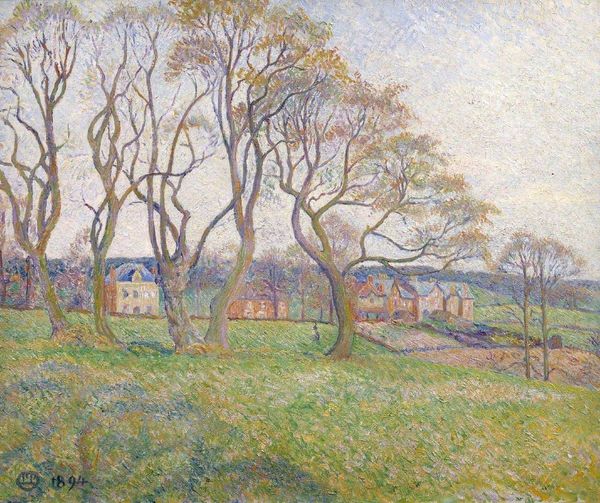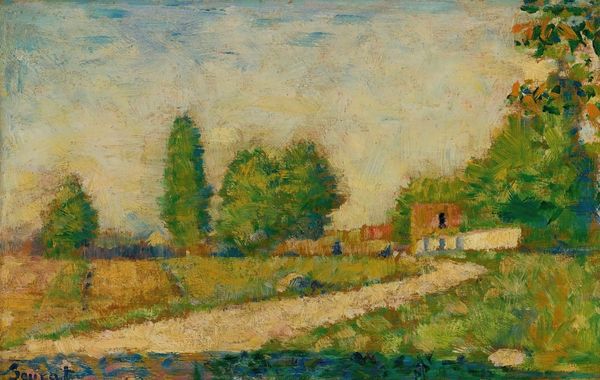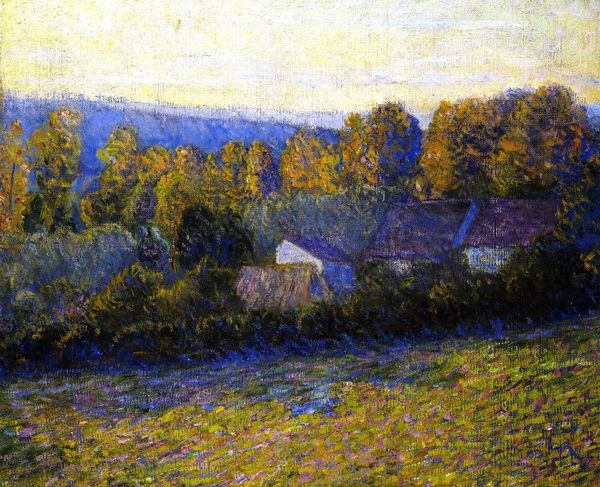
Dimensions: 73.4 x 91.1 cm
Copyright: Public domain
Editor: Here we have Ernest Lawson’s "An Abandoned Farm," painted in 1908. The subtle color palette and almost melancholic stillness really strike me. What is your take on this scene? Curator: Well, knowing Lawson was part of the Ashcan School, it's crucial to consider the socio-political currents of the time. Early 20th century America saw rapid urbanization. What do you think the choice of an abandoned farm signifies in this context? Editor: Maybe a commentary on the shift away from agrarian life? A kind of… loss? Curator: Precisely. And how does the Impressionistic style contribute to that feeling? Note how the broken brushstrokes soften the scene, creating a sense of faded memory. Does that influence your understanding of "abandonment?" Editor: Absolutely, it almost feels like the scene is dissolving. Was Lawson making a conscious statement, or just documenting a changing landscape? Curator: It’s probably both. Artists of the Ashcan School often aimed to depict unfiltered reality, but their choices – what they focused on, how they framed it – were inherently political. An "abandoned farm" becomes a powerful symbol when contrasted with booming industrialization, don’t you think? It forces us to consider progress and its discontents. Editor: That's a side I had not considered, framing social concerns through landscapes. This has completely reframed how I look at Lawson’s choice of subject. Curator: Understanding art in its historical context offers a much richer viewing experience, doesn't it? I think that these images remind us that everything has a place and value in our present and future societies.
Comments
No comments
Be the first to comment and join the conversation on the ultimate creative platform.
